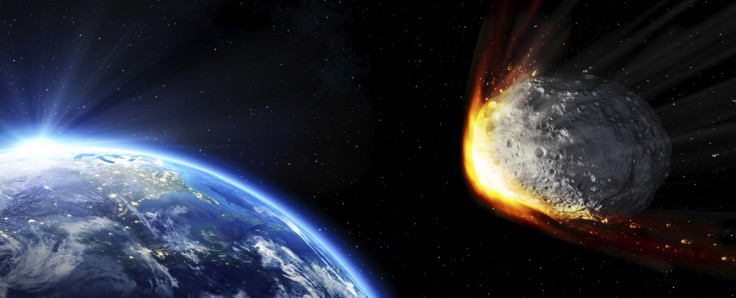Meteorites to be vaporised with lasers in bid to work out how to save Earth from giant asteroids

Scientists are preparing to vaporise meteorites with lasers in a bid to gain a better understanding of how to save the planet from an Earth-bound asteroid. Two walnut-sized meteorites that formed 4.6 billion years ago will be targeted with a nanosecond laser pulse in order to work out how we could best deflect an asteroid away from the planet.
Currently, Nasa has identified more than 14,000 near-Earth objects and worked out the risk of them striking the planet. Of these, 1,500 are classified as being "potentially hazardous" to Earth. However, experts also warn that there are millions of asteroids we still do not know about. Eventually, a large asteroid will hit Earth, the ramifications of which could be devastating.
Megan Bruck Syal, from the Lawrence Livermore National Laboratory in California, said: "It's not a matter of if, but when. Our challenge is to figure out how to avert disaster before it happens."
Scientists across the globe are examining several possibilities for how to stop a giant asteroid from striking Earth. One way would be to blow it up echoing the movie Armageddon, but this has a number of drawbacks – including the possibility of the exploded fragments raining down on Earth. The favoured option is finding a way to knock the asteroid off its trajectory so it passes by the planet instead.
Bruck Syal is part of a planetary defence team working with Nasa and other international organisations to find out how they could deflect the next big asteroid on its way to Earth. One of the main issues in firing lasers at asteroids to push them away is understanding what sort of asteroid they would be targeting.
"Each comet and asteroid has its own unique character, which presents a challenge for predicting how an individual target would respond to a deflection attempt," she said. "The make-up may vary significantly from asteroid to asteroid. An individual body may have an abnormal orbit or rotation, and its size would also affect which method we might use to deflect it.

"There's very little known about asteroid strength. We're doing everything we can to know more about how asteroid materials respond under extreme conditions."
To better understanding their make-up and how asteroids might respond to laser pulses, the team is getting set to vaporise two meteorites. Teaming with Laura Chen from the University of Oxford, the researchers are analysing data from recent experiments to work out what sort of laser pulses to use.
Once they have determined this, they plan to cut the meteorites down to less than a thousandth of a millimetre ready to be blasted. Scientists will then place them inside a chamber and they will be vaporised with a laser pulse. They can then use this data to work out how to deflect a much bigger asteroid.
"If we are interested in deflecting an asteroid we want to know more about their material properties and these are the most common types of rocks we would expect to be dealing with if there was a potential impactor," Bruck Syal said. "Knowing more about these rocks' specific material properties is of great interest to us."
© Copyright IBTimes 2025. All rights reserved.






















